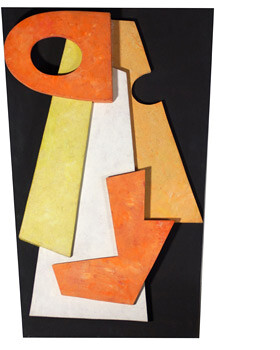Maya Stendhal Gallery
545 West 20th Street
New York, NY 10011
PHONE. 212.366.1549
FAX. 347.287.6775
http://www.mayastendhalgallery.com
Hans Richter: Art and Anti-Art, June 15-Sept 16
Publicly recognized during his life by awards such as including the International Prize for Film in Venice (1947) and Art Prize of the City of Berlin (1967), Hans Richter held over 158 exhibitions, wrote more than 23 books, and he produced, directed or wrote some 30 films. He founded the Film Institute of City College, New York, the first film institute in the United States, and he was actively working until his death in Switzerland in 1976.
An exhibition at Maya Stendhal gallery provides a unique opportunity to view an expansive range of Hans Richter’s artworks, films, paintings posters, original documents, lithographs, work-studies and sculptures by the visionary whose work continues to resonate and influence artists today.
Born into a prominent family in 1888 Berlin, Johannes Richter commenced his art training at the Academy of Art in Berlin and went on to study at the Académie Julian in Paris. Developing an avant-garde style, Richter was strongly influenced by artists he met at Berlin’s Sturm Gallery, as well as by the expressionistic work of Die Brücke and the Blaue Reiter groups. During WWI, after being drafted into the German army, wounded and discharged, Richter traveled to Zurich where he met with two friends from Germany, Albert Eherenstein and Ferdinand Hardekopf. They introduced him to the Dada artists Hugo Ball, Tristan Tzara, Hans Arp, Marcel Janco and Richard Huelsenbeck. Richter began collaborating with this new circle, and he soon became closely involved with the Dada movement.
Work from this period includes woodcuts, Dada head and Co-man drawings and abstracted portraits of his friends and associates such as his visionary 1917 Portrait of Emmy Hennings.
Early on in his career, Richter developed and propagated ideas on art based in a “Universelle Sprache” – universal language – free of national frontiers and comprehensible to all people. He continued to base his visual aesthetic in this concept using brushstrokes and organic and geometric shapes. Furthering his predilection for conceptual art by working with new technologies, in the 1920’s Hans Richter began working with Viking Eggeling to produce abstract films. Several of these groundbreaking films will be screened at Maya Stendhal Gallery, including Rhythm 21 (1921), Film Study (1926), Ghosts Before Breakfast (1927) and Dadascope (1961). Censored by the German government during the Nazi regime as “degenerate art” these films are now considered classics of early avant-garde cinema.
Responsible for creating a unique forum where artists and filmmakers could congregate, he collaborated with his old friends, art world intellectuals such as Marcel Duchamp, Fernand Leger, Alexander Calder, Max Ernst and Man Ray.
Richter immigrated to America following the outbreak of World War II.
CONTACT:
Laurence Lebon
Maya Stendhal Gallery
